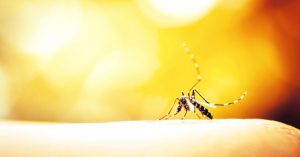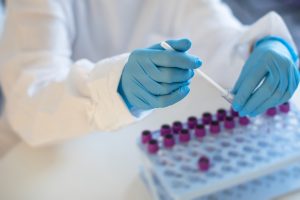 Biological Monitoring is the measurement and assessment of workplace agents or their metabolites either in tissues, secreta, excreta, expired air or any combination of these to evaluate exposure and health risk compared to an appropriate reference.
Biological Monitoring is the measurement and assessment of workplace agents or their metabolites either in tissues, secreta, excreta, expired air or any combination of these to evaluate exposure and health risk compared to an appropriate reference.
Many jobs involve the use of chemicals which can harm workers’ health if they are not properly handled. Under the “Regulations for Hazardous Chemical Substances 1995”, under section 43 of the Occupational Health and Safety Act, (Act No. 85 of 1993) employers have to look for the risks to health from chemicals in the workplace, listed in Table III. They must ensure that the exposure to chemicals is either eliminated or prevented, or properly controlled. To do this the employer needs to measure the amount of chemicals to which the workers are exposed.
How Can Chemicals Enter the Body
The main routes of exposure are:
- by inhalation (breathing in);
- by skin absorption; or
- by swallowing chemicals. This can happen if hands become contaminated at work and are not washed before eating, drinking or smoking.
If the workers are exposed to chemicals in their daily work, the most common way of finding out how much they are exposed to is to measure the amount of the chemical present in the air they breathe. However, this does not indicate how much of the chemical has actually entered the body. In particular, it does not measure how much has entered the body through the skin or by swallowing. This is why biological monitoring is recommended for certain chemicals.
How Can the Amount of Chemicals Absorbed Into The Body Be Measured?
Biological monitoring can be used to indicate how much of a chemical has entered the body. It involves measuring the chemical the workers are exposed to at work (or its breakdown products) in a sample of breath, urine or blood. The sample used depends on how the chemical is processed by the body. Biological monitoring is often used together with air monitoring.
Why Should You Have A Biological Monitoring Programme?
Biological monitoring is especially useful when:
- there is likelihood of significant absorption through the skin; and/or of swallowing of chemicals
- control of exposure depends on engineering controls and personal protective equipment (PPE); the employer needs to check if these are protecting the workers.
If there is potential for exposure in the case of any harmful substances listed in Table III (Substances with Biological Exposure Index- BEI) of the Regulations for Hazardous Chemical Substances, monitoring is compulsory. Similarly, in case of exposure to lead, biological monitoring is required by the “Lead Regulations 2001” under section 43 of the Occupational Health and Safety Act, (Act No. 85 of 1993).
Biological monitoring also has a fundamental role in occupational health risk assessment and can be used to assess efficacy of:
- Engineering controls
- Administrative controls
- Personal protective equipment (PPE)
- Human factors such as personal behaviour effecting hygiene, appropriate use of engineering controls or working neatly.
Biological monitoring assists in assessment of early signs of disease by using biomarkers of exposure.
How To Establish And Manage A Biological Monitoring Programme?
Manage A Biological Monitoring Programme?
The main steps involved in a biological monitoring programme are:
Step 1: Define the purpose of the programme
Step 2: Appoint a competent person to manage the programme
Step 3: Define the monitoring strategy
Step 4: Consult with the employees or their representatives
Step 5: Establish procedures for sample collection, storage and transportation
Step 6: Establish procedures for interpretation of results and action to be taken from the results obtained.
What Are The Ethical Issues Surrounding Biological Monitoring?
There are two significant ethical issues relating to biological monitoring. These are mainly the confidentiality of results and the right of the workers to know results of measurements in his/her specimen. Obtaining a written consent from workers is advisable.
Air monitoring and biological monitoring are complementary tools used with the same objective and that is the protection of workers.
For any further information and advice on biological monitoring contact:
Mrs. Inakshi Naik
Analytical Services.
Tel: +27(0)11 712 6410
Fax: +27(0)11 712 6533
Email: ina.naik@nioh.nhls.ac.za




